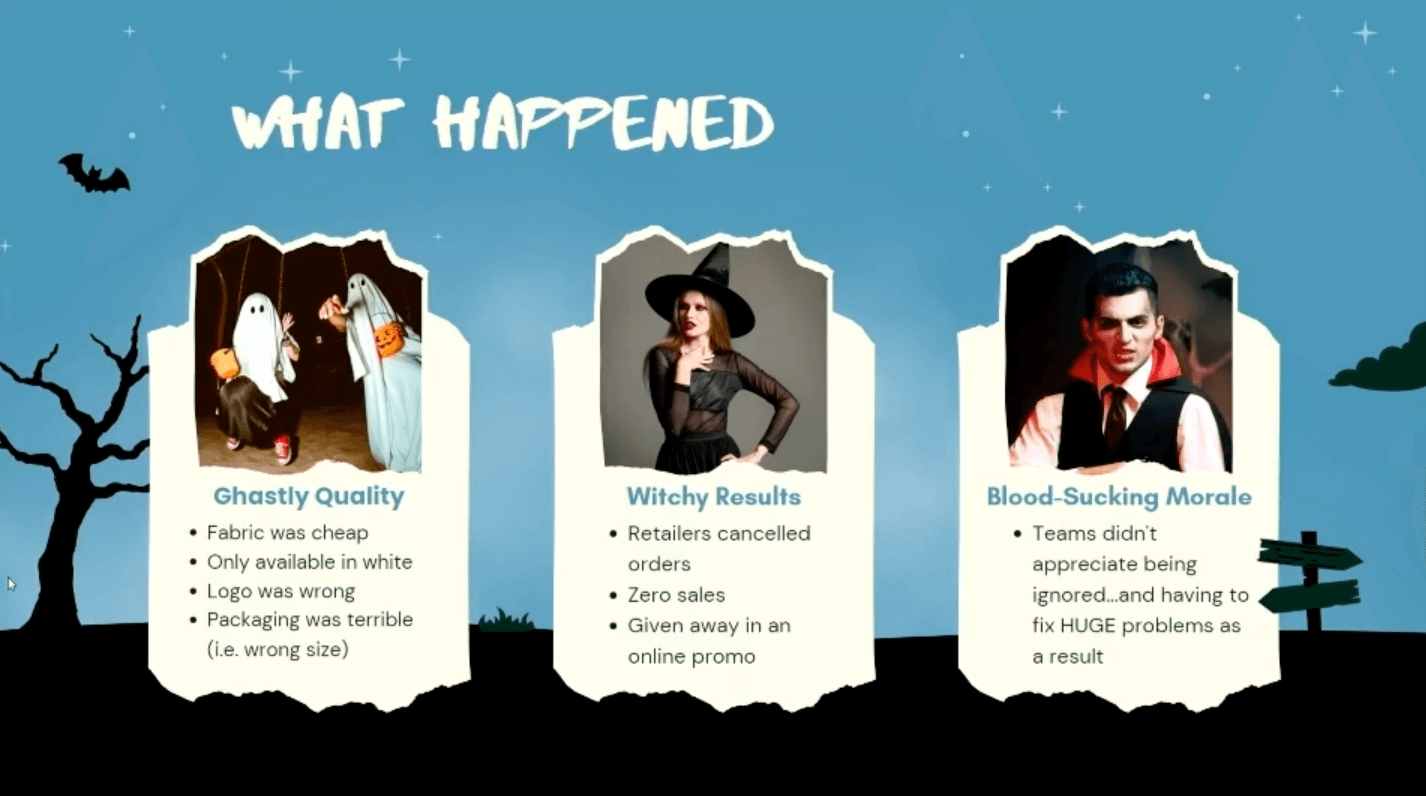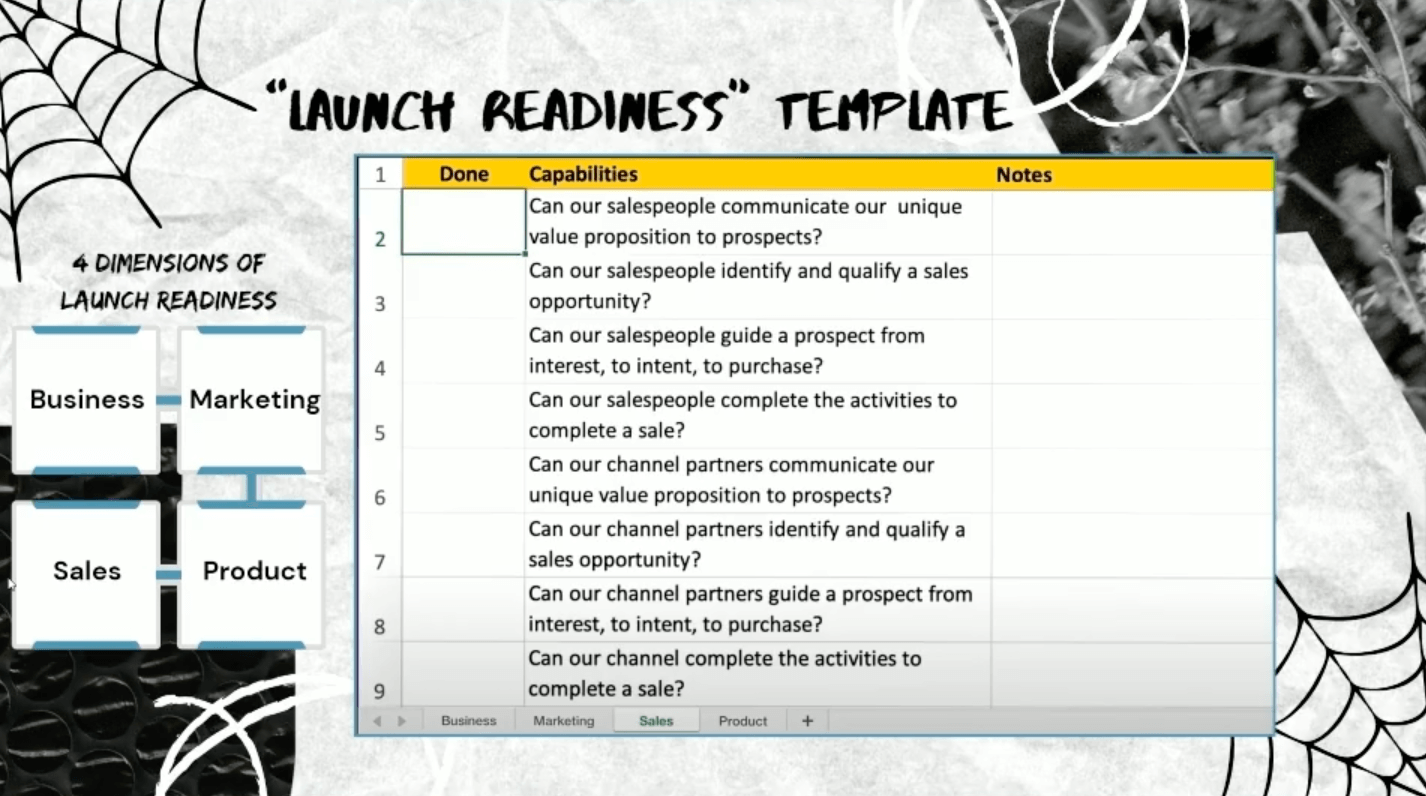Every product marketer has that one story – the project that went bump in the night. Maybe it was a last-minute pivot, a cursed deadline, or a campaign that refused to die. Whatever it was, it probably taught you a lesson you’ll never forget.
I’ve always loved both product marketing and Halloween, so bringing them together felt only natural. Think of this as a mix of spooky storytelling and group therapy for PMMs everywhere.
As a triplet, I grew up learning from my siblings’ mistakes. Product marketing works much the same way: we all learn from each other’s near misses and nightmares.
So, for this article, I crowdsourced some truly chilling tales from fellow PMMs – stories of unrealistic deadlines, failed freemium models, haunting misalignments, and identity crises between brand and product.
And because no ghost story is complete without a happy ending, I’ll share plenty of “tricks and treats” – actionable templates to help you avoid these frightful fates.
Ready to lift the lid on the coffin? Let’s begin.
Horror story #1: The curse of the unrealistic deadline
Our first tale of terror comes from Abigail, who, in her words, fell into “sleep sack hell.”
Back in 2021, Abigail was a Senior PMM at a luxury baby product company. This was right after COVID, when supply chains were a total nightmare. Her executive team had decided they had to launch a new luxury baby sleep sack (essentially a tiny sleeping bag for babies) in just eight weeks.
Eight weeks! That’s a blink of an eye for a normal product launch, let alone one involving product design, manufacturing, and shipping from overseas. The project quickly turned into a horror story.
The descent into sleep sack hell
When the products arrived, it was immediately clear something had gone terribly wrong. The fabric felt cheap – “Michael’s T-shirt quality,” as she put it. The color? Plain white, because there wasn’t enough time to dye the material – not exactly ideal for something a baby is going to sleep in. The logo? Wrong. And the packaging? It didn’t even fit on retailers’ shelves.

As you might guess, the retailers canceled their orders. The team ended up doing social media giveaways just to get rid of the inventory – luxury sleep sacks turned into clearance-bin ghosts.
Abigail had raised concerns along the way, but by the time anyone listened, the damage was done. The product flopped, morale plummeted, and the whole ordeal became a case study in how not to rush a launch.
Tips to avoid this fate
We’ve all been haunted by unrealistic deadlines – those moments when leadership says, “Just launch it now!” and your gut screams, This is going to go wrong.
The best defense against this curse? Ask why. Why is there an eight-week mandate? Is there a competitive threat? A true market need? Or just pressure from above? Understanding the “why” behind the urgency helps you assess whether cutting corners is worth the risk.
Be upfront about trade-offs, too. If you have to move fast, make it clear what that means for quality, customer experience, or brand reputation. Which corners can safely be cut, and which absolutely cannot?
And finally, do your validation homework. Skipping discovery or testing always comes back to bite you. Before diving in, validate assumptions about timelines, resources, and product readiness. If your gut says it’s too soon, raise the flag early – it might just save your launch (and your sanity).
For expert advice like this straight to your inbox every Friday, sign up for Pro+ membership.
You’ll also get access to 30+ certifications, a complimentary Summit ticket, and 130+ tried-and-true product marketing templates.
So, what are you waiting for?
Trick or treat: The launch readiness template
To tackle this particular nightmare, use a launch readiness template to help teams align and spot gaps before it’s too late.

We all have our GTM plans, and those are great. But a launch readiness template goes deeper. It’s not about tactical tasks like “update the website” or “finalize the one-pager.” It’s about alignment across teams: business, marketing, sales, and product.
Each team answers key capability questions, such as:
- Can our salespeople communicate our unique value proposition to prospects?
- Can they identify and qualify opportunities?
- Can they guide a prospect from interest to purchase?
If any of these questions get a “no,” that’s a red flag. It means the team – or maybe the company – isn’t ready to launch.
The beauty of this approach is that it turns readiness into a shared responsibility. It’s not about one team dropping the ball. It’s about visibility. Everyone sees what’s ready, what’s not, and what needs attention.
And for us product marketers, it’s also a bit of self-preservation. Too often, we’re made the scapegoats when launches go sideways. This framework helps you show, with clarity and evidence, where the real blockers are – and ensures you’re never the one blamed for someone else’s unfinished business.
Horror story #2: From freemium to screamium
Let’s set the stage. This story comes from David, who was working at a startup focused on tenant screening – basically, helping real estate agents process rental applications. If you’ve ever rented an apartment, you know the drill: you pay a fee (say, $30) to have your background checked.
In this case, the product was free for real estate agents – their ICP – and tenants paid the screening fee. So far, so good. But then the co-founder had a brilliant idea: “Let’s launch a premium version for agents! Twenty dollars a month!”
No research. No validation. Just vibes.
They had around two million users in total, so the cofounder figured, “We’ll convert 5,000 paying customers – that’s only 0.3%! Easy!” Except… they didn’t actually know who those users were. Many were tenants, not agents. Some accounts were inactive. Others hadn’t logged in for months. It was a graveyard of assumptions.




